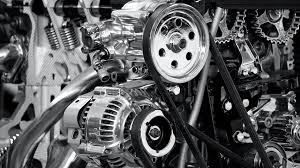A Comprehensive Guide.
The Ministry of Transport (MOT) test, a cornerstone of vehicle safety in many countries, is a mandatory annual inspection for vehicles over a certain age. This test ensures that cars, motorcycles, and other light vehicles are roadworthy and meet specific environmental standards. Understanding the MOT’s significance, procedures, and implications can help vehicle owners maintain their vehicles more effectively and comply with legal requirements.
Historical Context and Purpose
The MOT test was introduced in the United Kingdom in 1960 by the Ministry of Transport, which later evolved into the Department for Transport. Initially, the test focused on basic safety checks, but over the decades, it has expanded to encompass a wide range of components and systems within a vehicle. The primary objective of the MOT is to ensure that vehicles on public roads are safe to drive and do not pose a threat to other road users or the environment.
Key Components of the MOT Test
- Safety Checks:
- Brakes: The efficiency and condition of the braking system are crucial. Inspectors check for brake pad wear, brake fluid leaks, and the performance of the brakes.
- Steering and Suspension: The test ensures that the steering is responsive and the suspension provides adequate support. This includes checking for wear and damage in the steering wheel, suspension arms, and shock absorbers.
- Tyres and Wheels: Tyres must have the correct tread depth (usually at least 1.6mm), and wheels must be in good condition without significant damage or excessive wear.
- Visibility:
- Windscreen and Wipers: The windscreen must be free from significant damage, and wipers should clear the screen effectively.
- Lights and Indicators: All lights and indicators must be operational and correctly positioned to ensure visibility and communication with other drivers.
- Environmental Standards:
- Exhaust System and Emissions: The exhaust system is checked for leaks and effectiveness. Emission levels are tested to ensure they meet environmental standards, which helps reduce pollution.
- Fuel System: Inspectors look for leaks and the security of the fuel system, ensuring it operates safely without risk of fire or environmental contamination.
- Structural Integrity:
- Bodywork: The vehicle’s body must be free from excessive corrosion or damage that could compromise its structural integrity.
- Seat Belts: All seat belts must be present, in good condition, and function correctly to ensure occupant safety.
- General Condition:
- Mirrors: Rear-view and side mirrors should be secure and provide a clear view of the road behind.
- Horn: The horn must be functional and loud enough to alert other road users.
- Number Plates: These should be clear, legible, and conform to legal standards.
The MOT Testing Process
The MOT test is conducted at approved test centers by certified testers. The process typically involves the following steps:
- Vehicle Check-In: The vehicle owner brings their vehicle to the test center, where it is logged into the system.
- Inspection: The certified tester conducts a thorough inspection based on the criteria mentioned above. This usually takes around 45 minutes to an hour.
- Report and Certificate: Upon completion, the tester provides a report detailing any issues found. If the vehicle passes, an MOT certificate is issued. If it fails, the report will specify the reasons, and the owner must address these issues before a re-test.
Implications of the MOT Test
- Legal Compliance: Driving a vehicle without a valid MOT certificate is illegal and can result in fines, penalty points on the driver’s license, and invalidation of insurance.
- Safety Assurance: Regular MOT tests ensure that vehicles are safe to operate, thereby reducing the risk of accidents caused by mechanical failures.
- Environmental Impact: By enforcing emissions standards, the MOT test helps reduce the environmental footprint of vehicles, contributing to cleaner air and a healthier environment.
Preparing for the MOT
Vehicle owners can take several steps to prepare for an MOT test:
- Regular Maintenance: Regular servicing and maintenance can address many issues before they become serious problems.
- Pre-MOT Checks: Owners can perform basic checks themselves, such as ensuring all lights are working, tyres have adequate tread depth, and windscreen wipers are effective.
- Documentation: Ensure all relevant documents, such as the vehicle registration and previous MOT certificates, are available.
Conclusion
The MOT test is an essential part of vehicle ownership, ensuring that vehicles are safe, reliable, and environmentally friendly. By understanding its importance and preparing adequately, vehicle owners can ensure their vehicles remain roadworthy and compliant with legal standards. Regular maintenance and awareness of common issues can help pass the MOT test with minimal hassle, contributing to safer roads and a cleaner environment.





